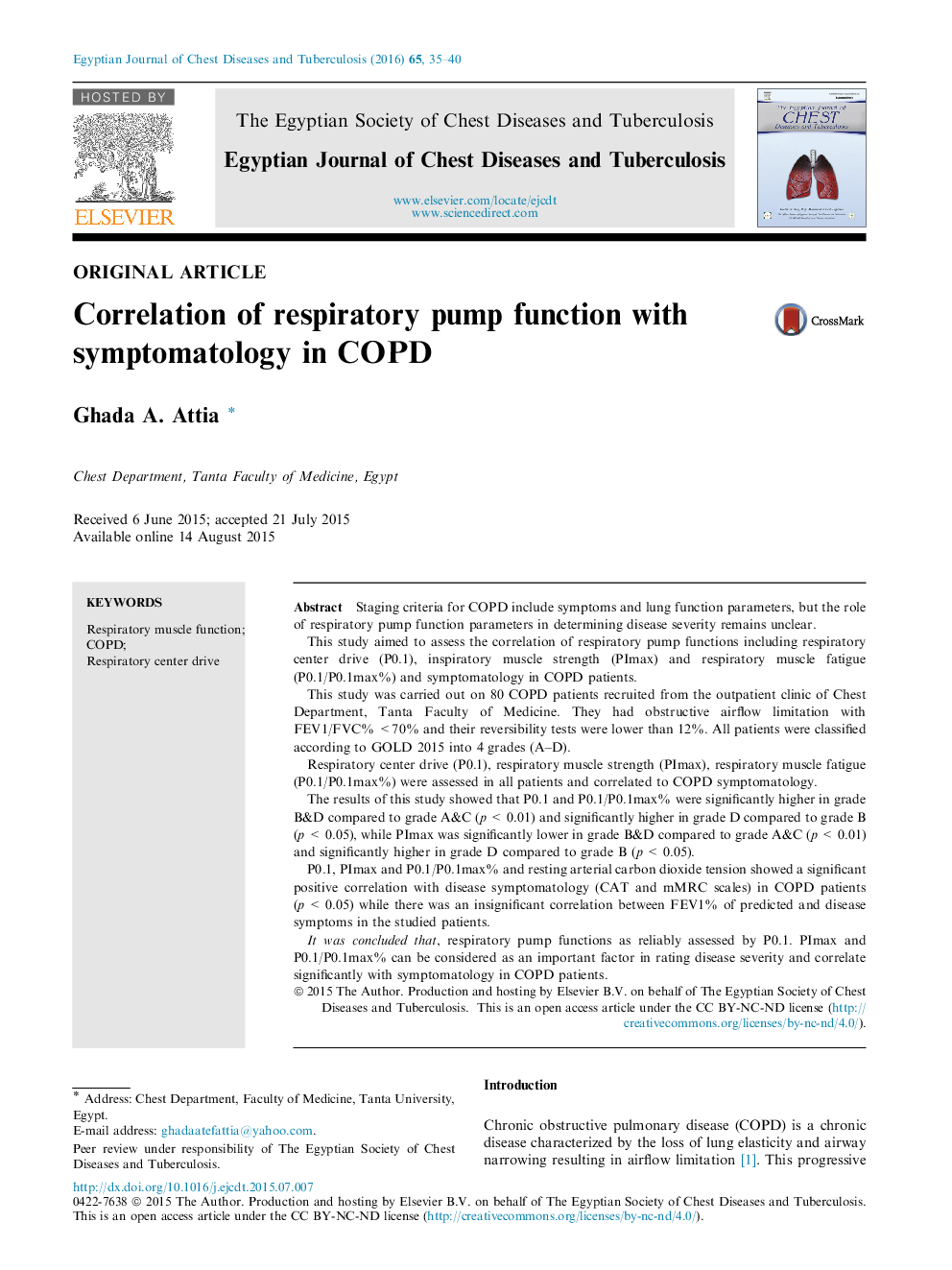| Article ID | Journal | Published Year | Pages | File Type |
|---|---|---|---|---|
| 3399881 | Egyptian Journal of Chest Diseases and Tuberculosis | 2016 | 6 Pages |
Staging criteria for COPD include symptoms and lung function parameters, but the role of respiratory pump function parameters in determining disease severity remains unclear.This study aimed to assess the correlation of respiratory pump functions including respiratory center drive (P0.1), inspiratory muscle strength (PImax) and respiratory muscle fatigue (P0.1/P0.1max%) and symptomatology in COPD patients.This study was carried out on 80 COPD patients recruited from the outpatient clinic of Chest Department, Tanta Faculty of Medicine. They had obstructive airflow limitation with FEV1/FVC% <70% and their reversibility tests were lower than 12%. All patients were classified according to GOLD 2015 into 4 grades (A–D).Respiratory center drive (P0.1), respiratory muscle strength (PImax), respiratory muscle fatigue (P0.1/P0.1max%) were assessed in all patients and correlated to COPD symptomatology.The results of this study showed that P0.1 and P0.1/P0.1max% were significantly higher in grade B&D compared to grade A&C (p < 0.01) and significantly higher in grade D compared to grade B (p < 0.05), while PImax was significantly lower in grade B&D compared to grade A&C (p < 0.01) and significantly higher in grade D compared to grade B (p < 0.05).P0.1, PImax and P0.1/P0.1max% and resting arterial carbon dioxide tension showed a significant positive correlation with disease symptomatology (CAT and mMRC scales) in COPD patients (p < 0.05) while there was an insignificant correlation between FEV1% of predicted and disease symptoms in the studied patients.It was concluded that, respiratory pump functions as reliably assessed by P0.1. PImax and P0.1/P0.1max% can be considered as an important factor in rating disease severity and correlate significantly with symptomatology in COPD patients.
